Scroll to:
Methodological Principle for Personnel Safety Assessment Based on Likelihood of Negative Events
https://doi.org/10.23947/2541-9129-2025-9-2-121-135
EDN: PLHHCE
Abstract
Introduction. Currently, for each area of human activity, there is a set of measures aimed at improving its safety from the effects of various negative factors that harm life and health. However, despite the existence and implementation of these measures, around 8,000 people still die from fires each year in the Russian Federation. Thus, the aim of the work is to improve the existing fire safety concept by defining a specific compliance condition for each specific type of assessment in this area. The basis for improving current methods and approaches to assessing the protection of facilities and population from fires is statistical analysis. This allows us to evaluate the likelihood of fire incidents and casualties based on the functional use of a facility, the causes of fires, and the social background of victims.
Materials and Methods. The research plan included both a theoretical and practical part. To solve the problem of the relationship between assessment forms and compliance conditions, we outlined the methodological principle of "one assessment form — one compliance condition". This principle was based on the analysis of the existing regulatory framework of the Russian Federation in the field of fire safety. In order to assess the effectiveness of a particular form of assessment for a particular facility, we proposed a probabilistic approach. This involved determining the risk of fire and deaths in the facility, given the implementation of the assessment form.
Results. As a result of the study, we determined the average probability of fires and fatalities for certain classes of functional hazards of objects. This allowed us to calculate the expected risk of death if one of the legal forms of fire safety assessment was applied. The proposed methodological approach was presented in the form of a draft, and the mathematical calculations were provided in the form of flowcharts and tables. These visual representations described the research and made it easier to understand. Both the proposed and existing methodological approaches were identified, highlighting their disadvantages and advantages. We proposed implementing and adding new forms and conditions to ensure the fire safety of facilities.
Discussion and Conclusion. The work will makeit possible to develop methods for mathematically modeling hazardous working conditions for employees and toidentify a catalogue of social and economic risks at industrial facilities. This is a necessary tool for professionals andowners to ensure industrial safety.
Keywords
For citations:
Fomin A.I., Besperstov D.A., Trubitsyn A.A., Trubitsyna N.V., Popova E.A., Petrova V.A. Methodological Principle for Personnel Safety Assessment Based on Likelihood of Negative Events. Safety of Technogenic and Natural Systems. 2025;(2):121-135. https://doi.org/10.23947/2541-9129-2025-9-2-121-135. EDN: PLHHCE
Introduction. Currently, intensive work is underway in the Russian Federation and abroad to improve the safety of working and living conditions for citizens. In particular, safety of the population [1] is determined by fundamental legislative acts in our country [2]. However, despite this, the number of accidents, fires and man-made emergencies has not decreased. Major accidents, fires, and emergencies on a federal or interregional scale pose a particular danger to the public and enterprises.
Fire prevention work is carried out both in our country and abroad. For example, Portugal actively develops a strategy to prevent fires. A group of specialists analyzes the causes of fires for subsequent amendments to the country's legislative framework [3]. The catastrophic fires in the Brazilian forest in 2020 and 2021 have served as an impetus for developing measures to prevent future fires. New ways of prevention have been proposed, and successful fire management strategies have been created [4].
Based on the above, we can conclude that it is necessary to further update the existing measures to improve the safety of businesses and employees, as well as to develop new measures that take into account modern conditions and requirements. This is the aim of our research.
Materials and Methods. The analysis was based on the classical rule for calculating the risk (probability) of a negative situation [5]. The effectiveness of the fire safety assessment form for a particular facility depended on the expected risks of fire and casualties (R(ср.ф)) [6]. In other words, for an object corresponding to a certain class of functional fire hazard, a negative situation was modeled — the occurrence of a fire, and then, using the classical sum law [7], the risk of death was determined [8], depending on the purpose of the object, the causes of fire, and the social status of victims (R(ср.о)). Numerical values for the calculations were taken from statistical data on fires in the Russian Federation for 2022, which were freely available on the Internet on official resources. The calculations were performed using an engineering calculator with an extended set of functions that provided the required accuracy and support for complex mathematical operations.
Results. To develop measures necessary to ensure safety of the facility and its personnel, it is important to assess the current state of the company and determine the conditions under which both the company and its employees are protected from hazards associated with the production process.
According to fire safety standards [9], the forms of assessments, their positive and negative values [10], were defined, which are presented in Table 1 [11].
Table 1
Positive and negative values of the existing forms of assessing the compliance of a facility with fire safety requirements
|
Assessment form |
Positive aspects |
Negative provisions |
|
Federal State Fire Supervision, etc. |
State-owned, financially independent form of assessment, the results of the proposed measures do not affect the monetary remuneration of the SFS inspector |
Burden on enterprises and citizens in the form of administrative impact and separation from their main activities for participation in monitoring, supervising, and inspection activities |
Positive and negative provisions of the existing compliance conditions are presented in Table 2.
Table 2
Conditions for compliance of objects, highlighting positive and negative aspects
|
Compliance conditions |
Positive aspects |
Negative provisions |
|
|
When meeting the requirements of the technical regulations, taking into account |
fire safety requirements |
The standard of measures: formation of understanding by individuals and the organization of the general FS requirements; as a result of technical regulation, the division into mandatory and voluntary use |
Limited development of organizations due to government frameworks (administrative barriers); government intervention in case of formal violations of requirements, without their actual impact on safety; modification, exclusion of requirements and their introduction confirms the inadequacy of mandatory measures once again (requirement for the sake of requirement) |
|
fire risk |
It is possible to determine the safety of people by calculation, including in the presence of violations of fire safety requirements |
Complex mathematical calculations; not all fire hazards and parameters of buildings and structures are taken into account. |
|
In turn, the conditions for ensuring the safety of the facility are fulfilled when implementing the safety system outlined in the flowchart (Fig. 1)
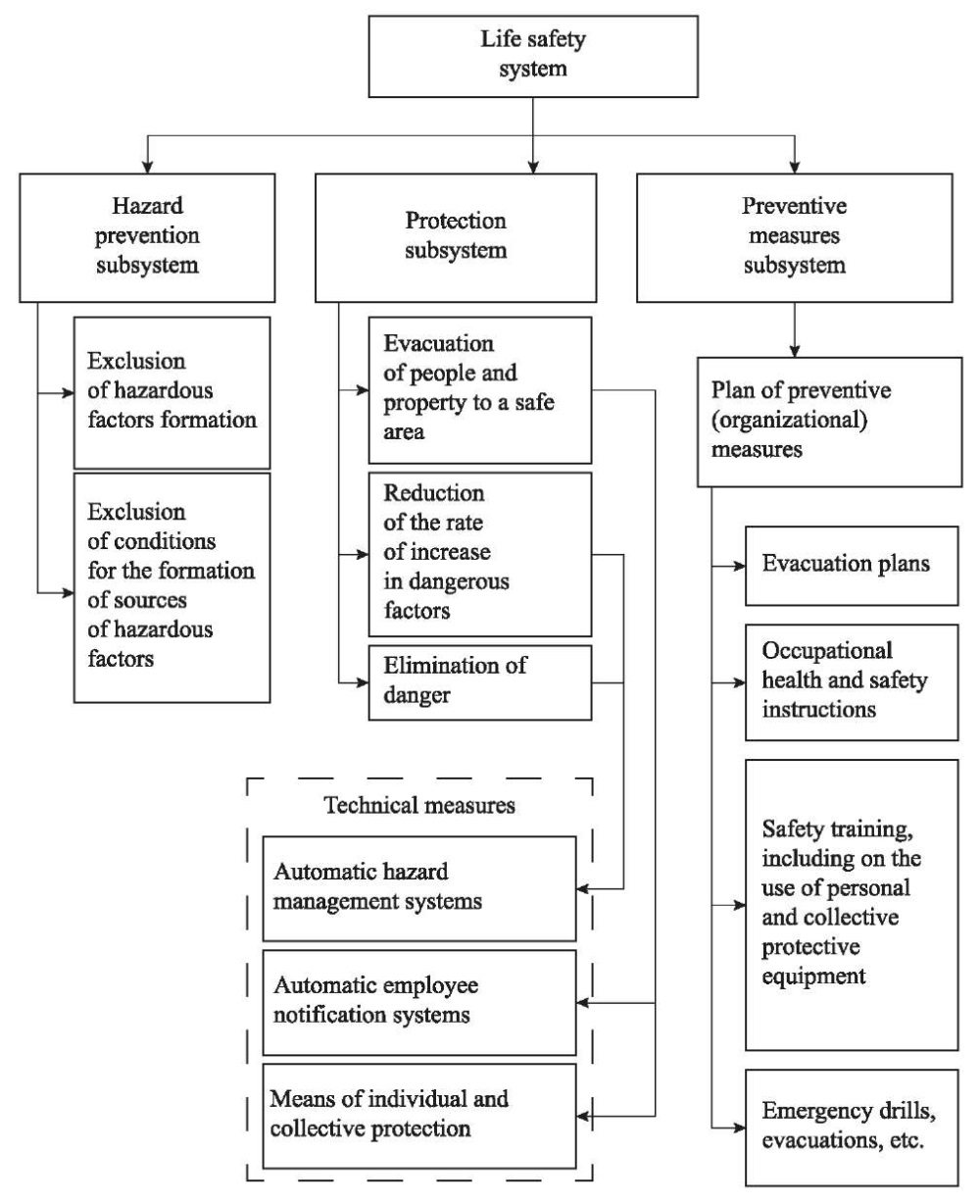
Fig. 1. Fire safety system of facilities
Taking into account positive and negative assessments of the safety of enterprises and their employees, Tables 3, 4, 5, and 6 present additional fire hazard assessments and measures to improve their implementation.
Table 3
Improving existing forms of safety assessments for enterprises and their employees
|
Form of assessment |
Event improvement |
|
Independent fire risk assessment (fire safety audit) |
Legislative possibility of introducing rapid assessments and software for these purposes, the definition of requirements for persons engaged in IFRA |
|
Federal State Fire Supervision |
Preventive measures should not be the basis for initiating inspections. The rights and duties of FSFS inspectors should be targeted, and the “other” innovation should be excluded |
Table 4
Additional forms of object conformity assessment
|
Additional assessment forms |
Reasons for the introduction of additional forms of assessments |
|
Regional State Fire Safety Supervision |
90% of fires and deaths occur in residential buildings, but there is no federal state fire supervision in residential buildings. |
|
Prevention of violations |
The form of assessment required by law is a preventive measure, along with the control, and supervision. |
Table 5
Improvement of the existing conditions of conformity of objects of protection
|
Compliance conditions |
Improvement of conditions |
|
|
When meeting the requirements of the technical regulations, taking into account: |
fire safety requirements |
Due to the “blind” fulfillment of requirements that do not always affect the fire hazard of the facility and do not involve financial costs on the part of organizations, their fulfillment is formal. It is necessary to expand the development of local requirements that are relevant to the protection object. |
|
fire risk |
Introduction of various calculation methods at the legislative acts level, including those developed by individuals other than federal executive authorities (EMERCOM of Russia). Fire risks should be associated with other risks that can lead to a fire (arson, anti-terrorism, industrial safety) |
|
Table 6
Additional conditions for fire safety at the facility
|
Additional compliance conditions |
Grounds for the introduction of additional conditions |
|
Act of the control (supervisory) FSFS event without violations |
As an independent state form of assessment, it is the most objective condition for compliance. It does not require additional financial costs for businesses and individuals. It is possible to involve specialists, experts and expert organizations |
|
Fire hazards after the evacuation of people |
No need for environmental costs to meet fire safety requirements when evacuating people before the onset of fire hazards. People of enterprises have the right to risk and insure their property |
Improvements and additions were based on the principles of ensuring and improving the safety of employees and property of the enterprise.
The analysis conducted allowed us to develop new methodological principles for assessing and ensuring the safety of an enterprise based on risk management.
A general existing principle for safety assessment and conditions is presented in Figure 2 in the form of a block diagram.
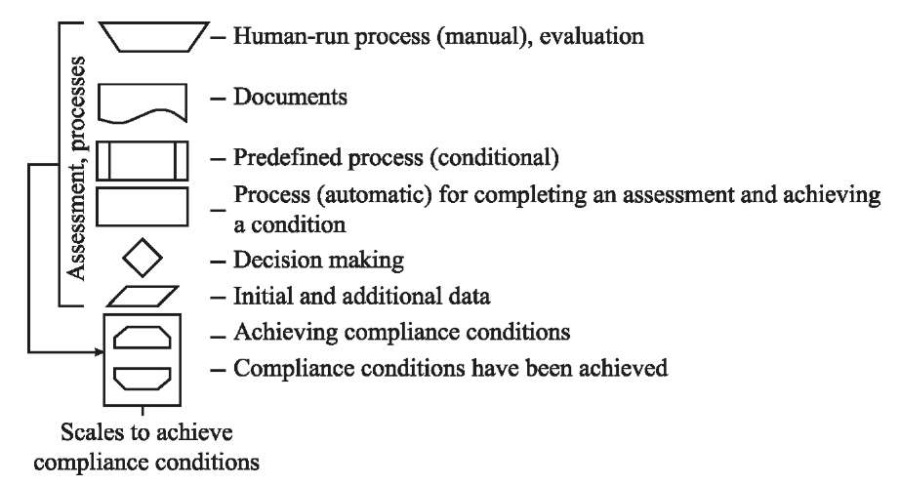
Fig. 2. The existing principle of fire safety assessment and conditions
The existing methodological principle of fire safety assessment and assurance is presented in the form of a general flowchart, since the norms provide for nine forms and five conditions that are not interrelated with each other, respectively (Fig. 3).
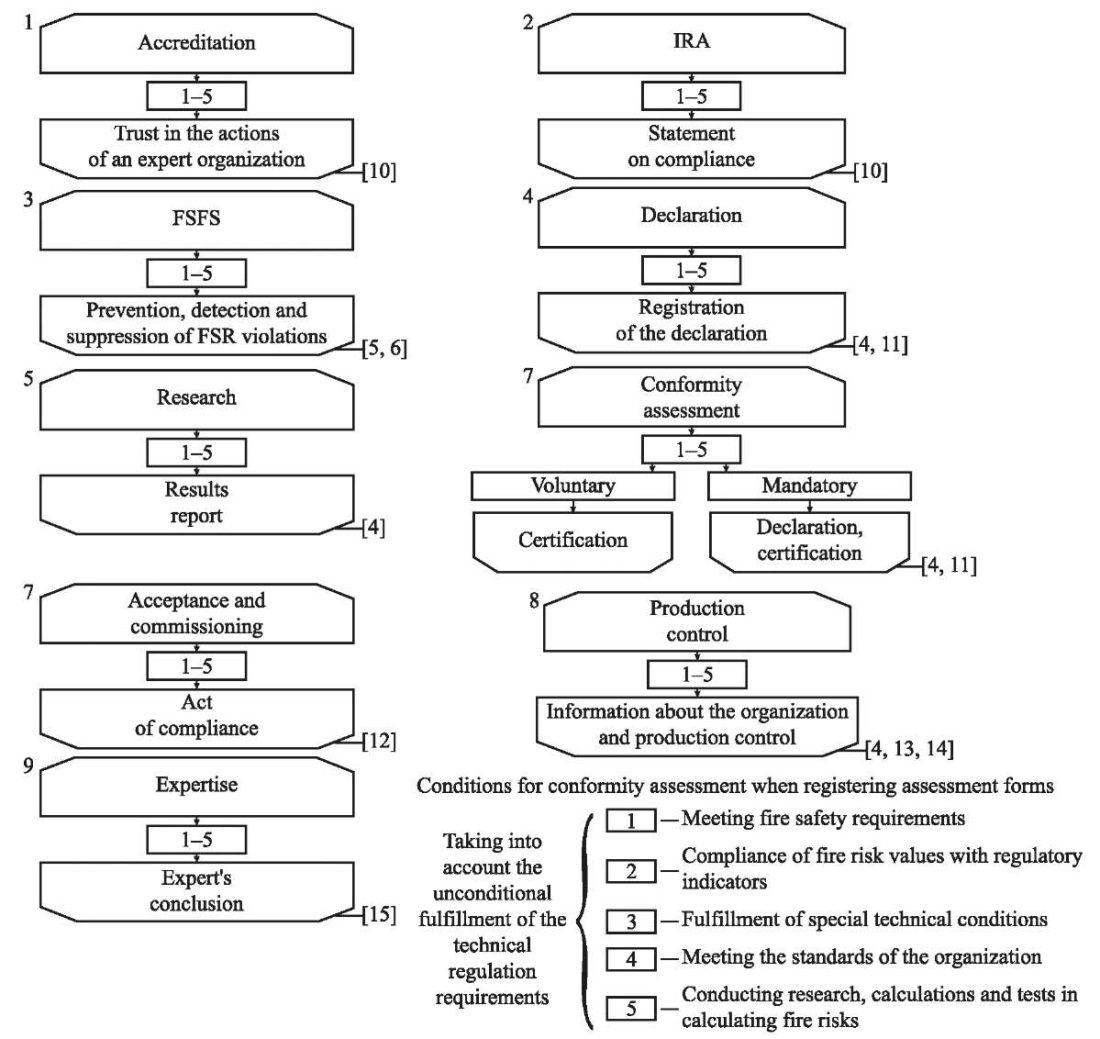
Fig. 3. The existing methodological principle of assessing and ensuring fire safety of facilities
Taking into account the above, the methodological principle “one form of assessment — one compliance condition” was proposed to solve the problem of the relationship between the form of assessments and the conditions of compliance (Table 7) [12].
Table 7
One form of assessment — one compliance condition
|
No. |
Form of assessment |
Compliance condition |
||
|
existing |
proposed |
existing |
proposed |
|
|
1 |
Accreditation |
Compliance of equipment, premises, and employees |
||
|
2 |
Federal State Fire Supervision |
Meeting fire safety requirements |
||
This principle will ensure all safety conditions, taking into account the chosen necessary form of assessment. It also clearly shows which form is implemented under certain conditions. The chosen principle will not allow replacing assessments with ineffective forms to achieve the necessary compliance conditions.
Ensuring the safety of employees and enterprises according to the proposed principle is presented in the form of a flowchart, which provides methodological support (Fig. 4).
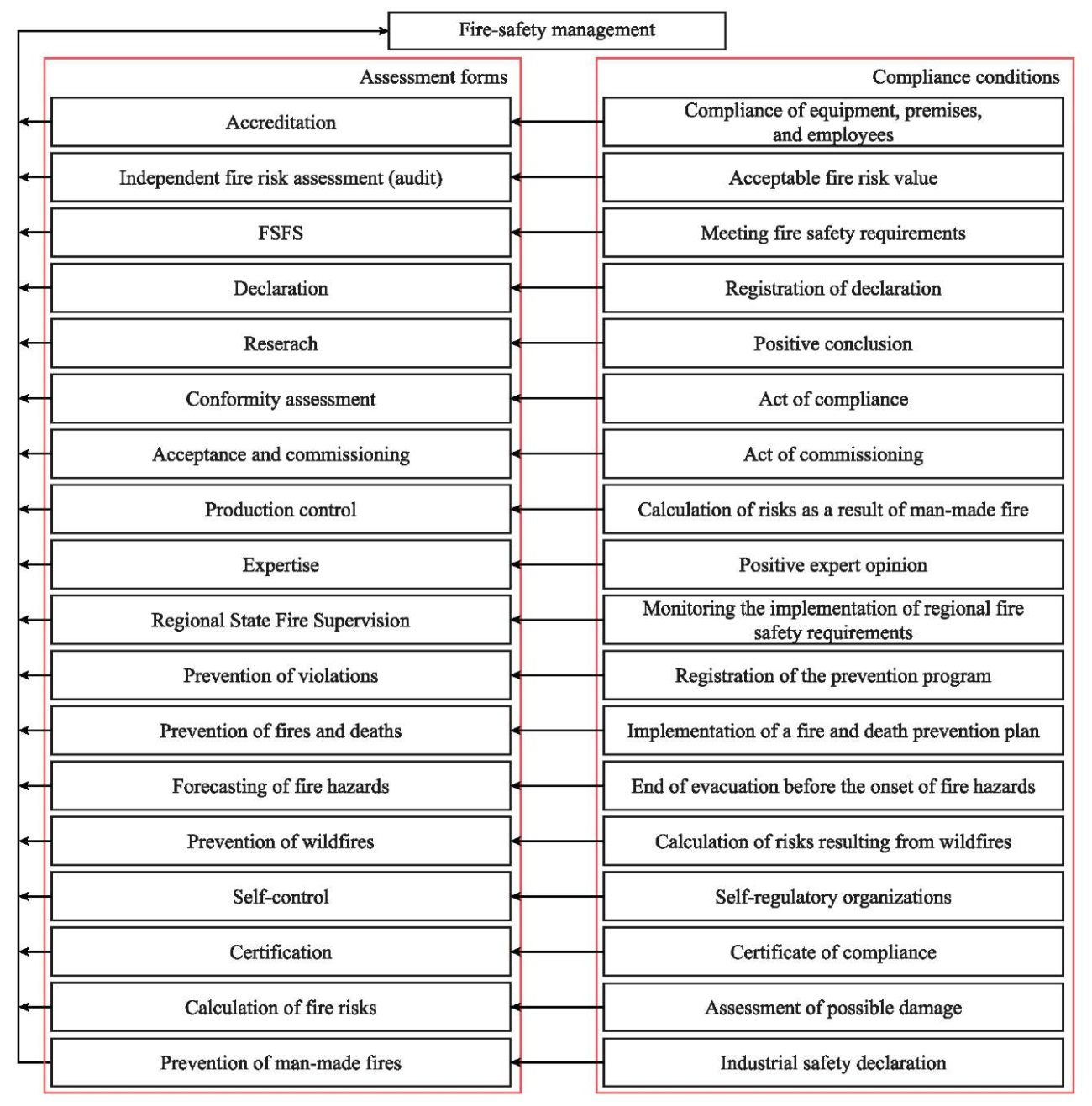
Fig. 4. Methodological support of fire safety for people based on the principle of “one form — one condition”
Thus, fire safety is ensured through the implementation of the attached forms and conditions. Figure 5 illustrates the implementation of the methodology in a flowchart.

Fig. 5. The proposed methodological principle for ensuring fire safety of people
For the practical implementation of the proposed methodological principle, it was necessary to analyze the actual risks of negative situations. The existing principles of ensuring fire safety are presented in the form of a flowchart in Figure 6.
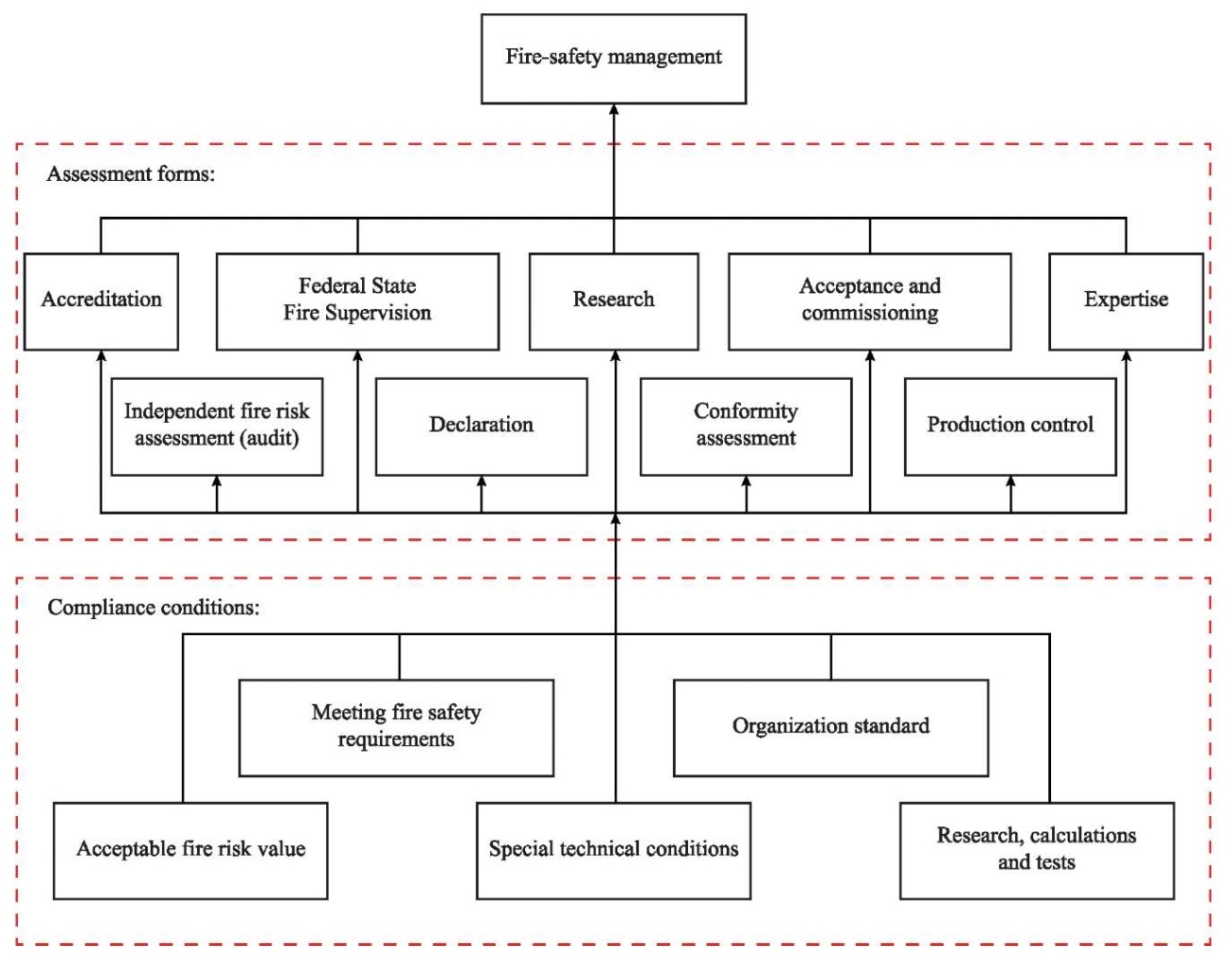
Fig. 6. The existing principle of ensuring fire safety based on regulatory forms of assessments and compliance conditions
It follows from this principle that all compliance conditions can be investigated for any form of assessment.
Considering statistical indicators on fires, the probabilistic criteria for actual risks are provided in Table 8.
Table 8
Distribution of the probability of fires and deaths of people at facilities located on the territory of the Russian Federation, 2022
|
Object number |
Object name |
Functional fire hazard class |
Number of objects, units.(Nо) |
Number of fires in 2022, units (Nп) |
Probability of a fire at the facility (Rп) |
Number of people killed (Nг) |
Probability of death in fires (Rг.п.) |
Probability of death from fire at the facility (Rг.о) |
|
1 |
Industrial buildings |
F 5.1 |
173,544 |
2,349 |
1.35·10-2 |
46 |
1.96·10-2 |
2.7·10-4 |
|
2 |
Warehouse buildings and structures |
F 5.2 |
100,147 |
744 |
7. 4·10-3 |
10 |
1.34·10-2 |
9.99·10-5 |
In this table, fire probability at the facility is determined by the formula [13]:
 (1)
(1)
The probability of death from fires at facilities is determined by the formula:
 (2)
(2)
The probability of death from fires:
 (3)
(3)
where Nп — number of fires, pcs; Nо — number of objects, pcs.
Data on the risk of death from fires is presented in Table 9.
Table 9
The probability of death in the Russian Federation in 2022, depending on the causes
|
Name of the cause of death: |
Number of deaths in 2022, people |
Rпр.г |
|
Poisoning by toxic combustion products |
2,828 |
1.9·10-5 |
|
Unknown causes |
1,519 |
1.04·10-5 |
|
Exposure to high temperature |
1,343 |
9.2·10-6 |
The probability of death of people depending on the causes (Rпр.г.), that is, from exposure to primary and secondary fire hazards [14], is determined by the formula:
 (4)
(4)
where Nпр.г — number of people killed, depending on the causes, people; Nнас.РФ — number of people killed, depending on the causes, people.
Table 10 provides the data on the probability of death of the population of the Russian Federation in terms of their social status.
Table 10
The probability of death among people in the Russian Federation in 2022, based on their social status.
|
Social status of people who died in fires, including |
Number of people who died in 2022 in the Russian Federation, people |
Rсоц..п |
|
workers in blue-collar jobs |
710 |
4.8·10-6 |
|
engineering and technical workers |
19 |
1.3·10-7 |
|
heads of organizations (enterprises) |
7 |
4.8·10-8 |
The probability of death from fires in terms of people social status is determined by the formula:
 (5)
(5)
where Nсоц.п — number of people who died in the Russian Federation in 2022, according to their social status, people.
Next, we will combine the indicators of calculated risks by distributing the objects of fire according to the causes and social status of the victims. For convenience, we will use a symbol to represent the objects: 1, 2, 3…
The related data is provided in Table 11.
Table 11
The related information on the objects where fires occurred, including those involving the death of people, the causes of death and the social status of the victims
|
Cause of death |
Symbols of the object where people died due to social status |
Social status of the deceased |
Symbols of the object where people died depending on their social status |
|
|
Poisoning by toxic combustion products |
1. 2. 4. 6. 7. 8. 10. 11. 12. 13 |
Workers in blue-collar jobs |
1. 2. 3 |
|
|
Unknown causes |
10. 12. 13 |
Engineering and technical workers |
1. 2. 7. 8 |
Then, using the formula below, we determine the overall probability of death of people, depending on their social status and causes:
 (6)
(6)
where N — number of probabilities of negative events related to fires.
The calculated information is presented in Table 12.
Table 12
Summarized information of the probability of occurrence of negative events related to fires and deaths in Russia in 2022
|
Ordinal number of the object |
Object name |
Functional fire hazard class |
Rп.о. |
Rг.о. |
Rпр.г. |
Rг.соц.п. |
Rср.о. |
|
1 |
Production facility |
F5.1 |
0.0135 |
0.00027 |
0.000019 |
0.0000046 |
0.0034443 |
|
0.0000092 |
0.00000013 |
||||||
|
0.0000046 |
0.000000048 |
||||||
|
0.0000042 |
0.0000043 |
||||||
|
0.0000023 |
|||||||
|
0.000000096 |
|||||||
|
0.000000048 |
|||||||
|
0.000000027 |
|||||||
|
Rср.о. minimum value |
0.00014066 |
||||||
|
Rср.о. maximum value |
0.02527716 |
||||||
This table shows the minimum and maximum values of average probabilities. This data can be used by stakeholders and services to take preventive measures, up to the coordination of government policy, to prevent fires and deaths.
Next, we proceed to determining the expected risks, depending on the forms of assessments and conditions for compliance with fire safety regulations at the facilities. The implementation of fire safety measures at facilities of different functional fire hazard classes [15] involves various forms and conditions, including additional ones, as shown in Figure 7.
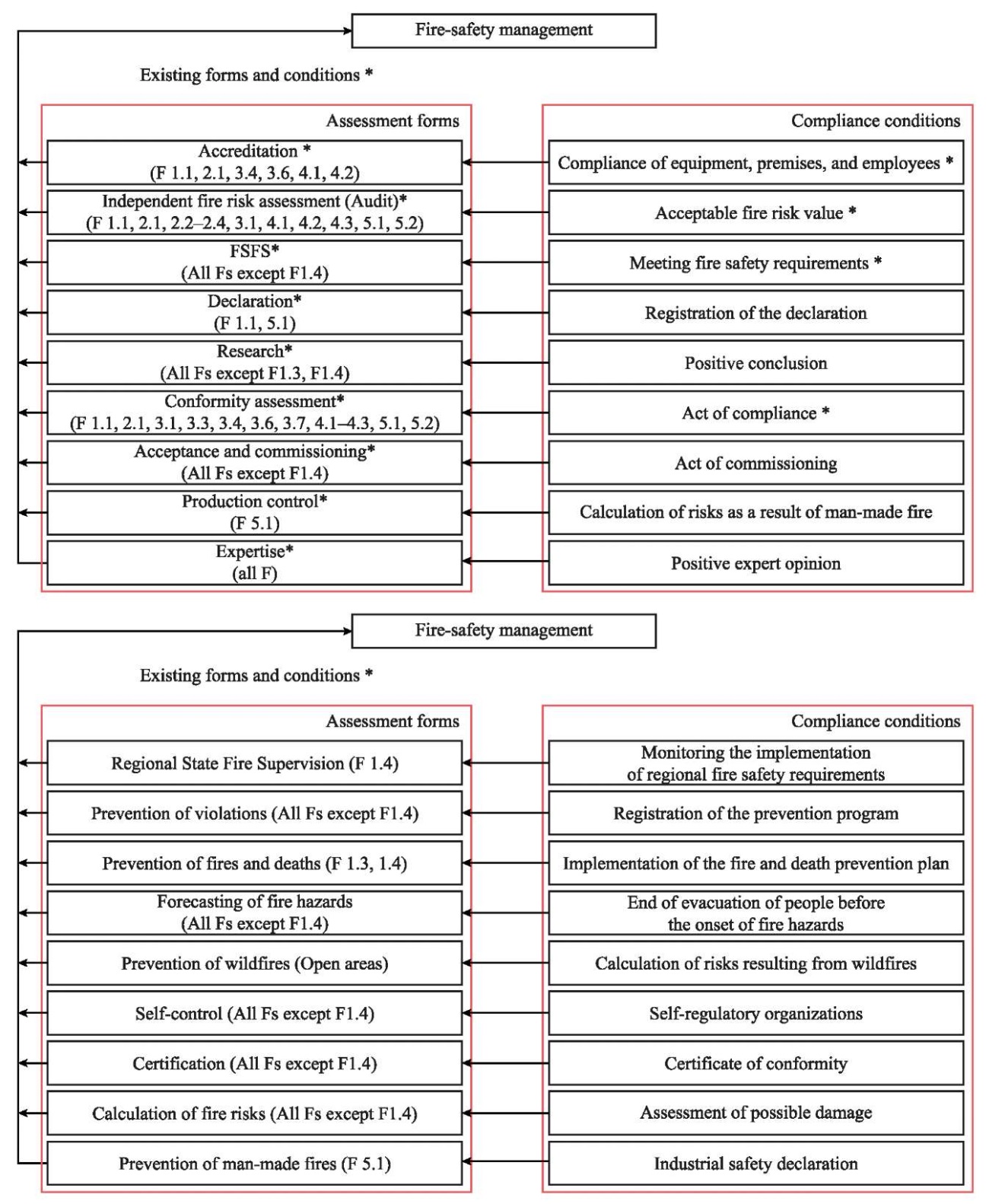
Fig. 7. Assessment forms and compliance conditions for ensuring fire safety at facilities, considering the functional purpose of the facilities
The expected risks for facilities by functional purpose (Rср.ф) are determined by the formula:
 (8)
(8)
The calculated values are summarized in Table 13.
Table 13
The values of the probability of expected risks in implementing the proposed methodological approach for assessing and ensuring human fire safety
|
Assessment form number |
Assessment form name |
Functional fire hazard class of the object |
Rср.о. of the corresponding functional fire hazard class |
Rср.ф. |
||||
|
1 |
Accreditation |
F1.1 |
F2.1 |
F3.4 |
0.0023 |
0.0019 |
0.00104071 |
0.001956785 |
|
F3.6 |
F4.1 |
F4.2 |
0.0019 |
0.0023 |
0.0023 |
|||
|
2 |
Federal State Fire Supervision |
F1.1 |
F1.2 |
F1.3 |
0.0023 |
0.00509277 |
0.02527716 |
0.001974004 |
|
F2.1 |
F2.2 |
F2.3 |
0.0019 |
0.0019 |
0.0019 |
|||
|
F2.4 |
F3.1 |
F3.2 |
0.0019 |
0.00126179 |
0.00404658 |
|||
|
F3.3 |
F3.4 |
F3.5 |
0.00404658 |
0.00104071 |
0.00303928 |
|||
|
F3.6 |
F3.7 |
F4.1 |
0.0019 |
0.0019 |
0.0023 |
|||
|
F4.2 |
F4.3 |
F5.1 |
0.0023 |
0.00139993 |
0.0034443 |
|||
|
F5.2 |
F5.3 |
0.00187666 |
0.00332425 |
|||||
|
Rср.ф. minimum value |
0.00014066 |
|||||||
|
Rср.ф. maximum value |
0.5 |
|||||||
The table shows the minimum and maximum values of the probability of negative events. The above-mentioned methodological principle of fire safety assessment is presented in the form of an algorithm in Figure 8.
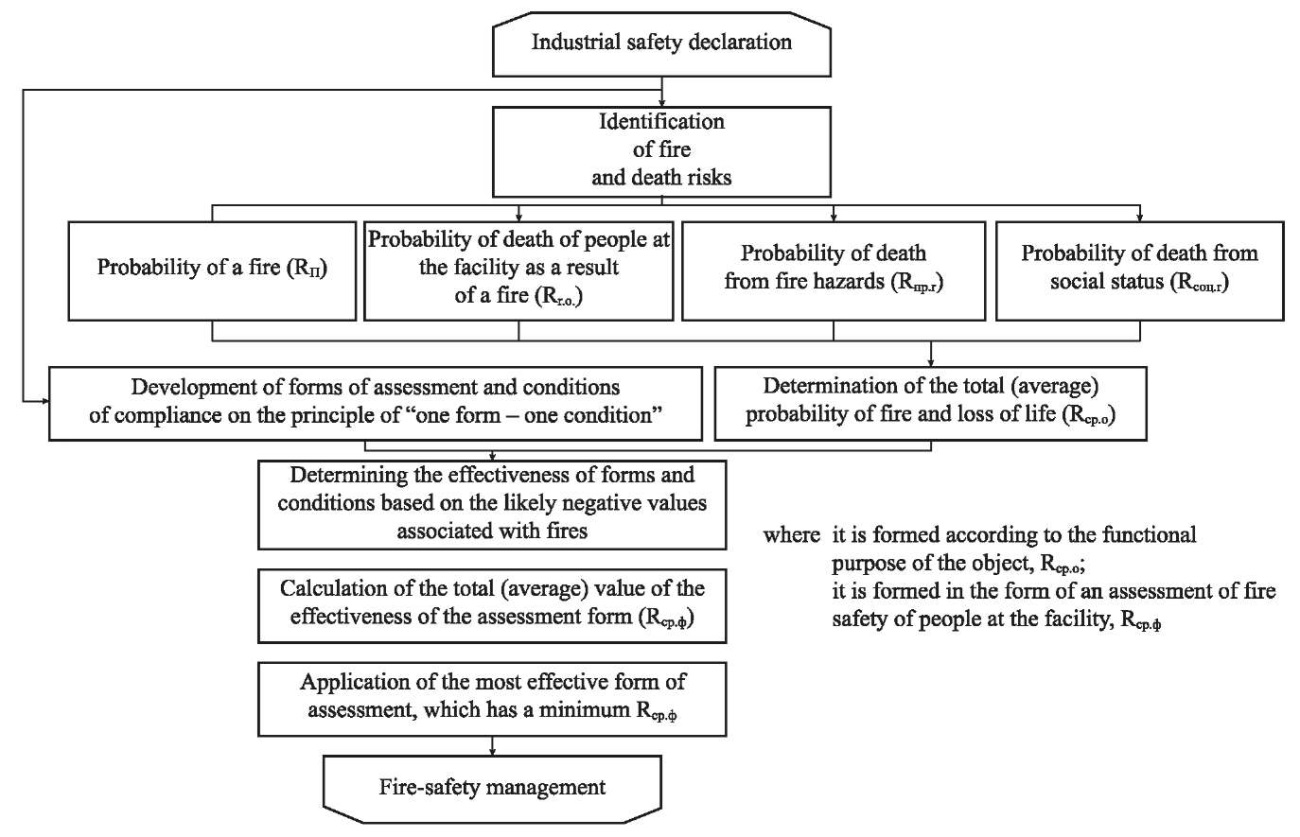
Fig. 8. Draft methodological principle for assessing and ensuring the fire safety of people
The proposed methodological principle for assessing the safety of people in fires improves the current procedure established by the legislation of the Russian Federation. This principle is based on actual values of risk of adverse events, which allows interested parties to take necessary preventive measures in advance.
Discussion and Conclusion. Updating the existing principles for assessing the safety of facilities, their employees, and the public based on regulatory documents and those proposed through risk management of potential negative situations allows interested individuals and legal entities to choose the most appropriate forms and conditions for implementation. Mathematical calculations presented in the study allow us to justify the benefits of proposed measures. Applying the principle of predictable risks supports the impossibility of achieving unconditional safety for an enterprise and its employees due to a significant number of unpredictable negative situations resulting from natural and human-made causes.
The practical significance of this research lies in the fact that the methodological approach proposed by the authors is based on mathematical calculations. By taking into account the potential risks, it is possible to develop preventative measures to avoid and minimize negative consequences associated with emergencies, accidents, workplace injuries, and fires.
The results of the work are especially relevant for owners of businesses and other infrastructure facilities. Their primary concern is ensuring the safety of their employees and the general public. Owners will be able to choose an appropriate form of assessment, not only based on the functional classification of the fire risk of the facility, but also considering the minimal risk of death if certain conditions are met. This will allow them to redistribute financial resources within the organization to meet specific fire safety requirements based on the chosen form of assessment.
References
1. Slesarchuk AV. Transformation of Federal Law No. 184-FZ "On Technical Regulation". News of the Tula State University. Technical Sciences. 2024;4:26–27. (In Russ.)
2. Malyshev VP, Azanov SN, Vinogradov OV. Possible Directions of the Regulatory Legal Framework Consolidation in the Field of Civil Defense and Protection of the Population from Emergency Situations. Civil Security Technology. 2023;20(1):33–38. (In Russ.)
3. Ferreira C, Costa Pinto L, Valente M. Forest Fire Causes and Prevention Strategies in Portugal: Insights from Stakeholder Focus Groups. Forest Policy and Economics 2024;169:103330. https://doi.org/10.1016/j.forpol.2024.103330
4. Pivello VR, Vieira I, Christianini AV, Ribeiro DB, Menezes LdS, Berlinck CN, et al. Understanding Brazil’s Catastrophic Fires: Causes, Consequences and Policy Needed to Prevent Future Tragedies. Perspectives in Ecology and Conservation. 2021;19(3):233–255. https://doi.org/10.1016/j.pecon.2021.06.005
5. Feng Li, Baoyan Duan, Yiping Sun, Xiaoxuan He, Zeyu Li, Bo Wang. Quantitative Risk Assessment Model of Working Positions for Roof Accidents in Coal Mine. Safety Science. 2024;178:106628. https://doi.org/10.1016/j.ssci.2024.106628
6. de Wit RAC, Helsloot I, Koetse MJ. The Value of a Statistical Life in Reducing Fire Risk: A Choice Experiment among Dutch Citizens. Safety Science. 2024;169:106322. https://doi.org/10.1016/j.ssci.2023.106322
7. Bahar Jahanvand, Seyed Bagher Mortazavi, Hassan Asilian Mahabadi, Omran Ahmadi. Determining Essential Criteria for Selection of Risk Assessment Techniques in Occupational Health and Safety: A Hybrid Framework of Fuzzy Delphi Method. Safety Science. 2023;167:106253. https://doi.org/10.1016/j.ssci.2023.106253
8. Mrozowska A. Formal Risk Assessment of the Risk of Major Accidents Affecting the Natural Environment and Human Life, Occurring as a Result of Offshore Drilling and Production Operations Based on the Provisions of Directive 2013/30/EU. Safety Science. 2021;134:105007. https://doi.org/10.1016/j.ssci.2020.105007
9. Timofeeva AV. Fire Safety Laws. Scientific and educational journal for students and teachers StudNet. 2020;12:918–921. (In Russ.)
10. Fomin AI, Besperstov DA, Ugarova IM, Voroshilov YaS. Development of Assessment Forms, as well as Conditions for Compliance with Fire Safety of Facilities and Updating Existing Ones. Vestnik of Safety in Coal Mining Scientific Center. 2023;2:63–71. (In Russ.)
11. Fomin AI, Besperstov DA, Ugarova IM, Kazantsev VG, Zykov VS. Methodological Principles for Assessing and Ensuring Human Fire Safety. Vestnik of Safety in Coal Mining Scientific Center. 2023;3:48–54. (In Russ.)
12. Fomin AI, Neverov EN, Besperstov DA, Li КKh, Ugarova IM. Development of the Methodological Principle of Ensuring Fire Safety of People. Vestnik of Safety in Coal Mining Scientific Center. 2023;4:27–34. (In Russ.)
13. Zeinab Masalegooyan, Farzad Piadeh, Kourosh Behzadian. A Comprehensive Framework for risk probability assessment of landfill fire incidents using Fuzzy Fault Tree Analysis. Process Safety and Environmental Protection. 20212;163:679–693 https://doi.org/10.1016/j.psep.2022.05.064
14. Zhanli Mao, Haonan Chen, Xin Chen, Liwei Zhang. Improved Reliability Analysis and Assessment Method of Occupant Evacuation and Its Application in Building Fires. Safety Science. 2025;181:106689. https://doi.org/10.1016/j.ssci.2024.106689
15. Garmyshev YaV, Garmyshev VV, Proshev DI. Legal Basis of Fire Safety. Education and Law. 2024;3:674–677. (In Russ.)
About the Authors
A. I. FominRussian Federation
Anatoly I. Fomin, Dr. Sci. (Eng.), Professor of the Department of Aerology, Occupational Safety and Nature, T.F. Gorbachev Kuzbass State Technical University; Senior Researcher at Vostochniy Research Institute for Mining Safety
28, Vesennyaya St., Kemerovo, 650000
D. A. Besperstov
Russian Federation
Dmitrii A. Besperstov, Cand. Sci. (Eng.), Associate Professor of the Department of Technosphere Safety
47, Stroiteley Ave., Kemerovo, 650056
A. A. Trubitsyn
Russian Federation
Anatoly A. Trubitsyn, Dr. Sci. (Eng.), Professor of the Department of Aerology, Occupational Safety and Nature
28, Vesennyaya St., Kemerovo, 650000
N. V. Trubitsyna
Russian Federation
Nelya V. Trubitsyna, Dr. Sci. (Eng.), Associate Professor of the Department of Aerology, Occupational Safety and Nature
28, Vesennyaya St., Kemerovo, 650000
E. A. Popova
Russian Federation
Ekaterina A. Popova, Associate Professor of the Department of Technosphere Safety
47, Stroiteley Ave., Kemerovo, 650056
V. A. Petrova
Russian Federation
Valeriya A. Petrova, Sudent of the Department of Technosphere Safety
47, Stroiteley Ave., Kemerovo, 650056
Review
For citations:
Fomin A.I., Besperstov D.A., Trubitsyn A.A., Trubitsyna N.V., Popova E.A., Petrova V.A. Methodological Principle for Personnel Safety Assessment Based on Likelihood of Negative Events. Safety of Technogenic and Natural Systems. 2025;(2):121-135. https://doi.org/10.23947/2541-9129-2025-9-2-121-135. EDN: PLHHCE







































